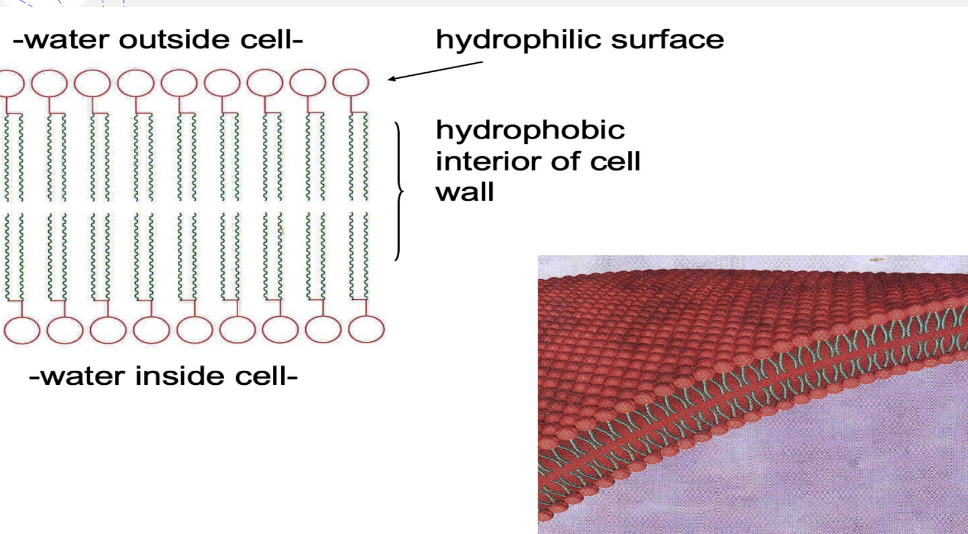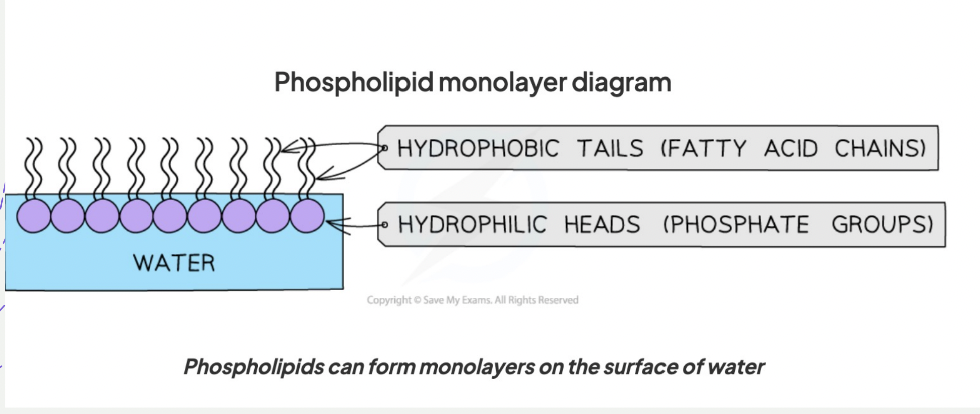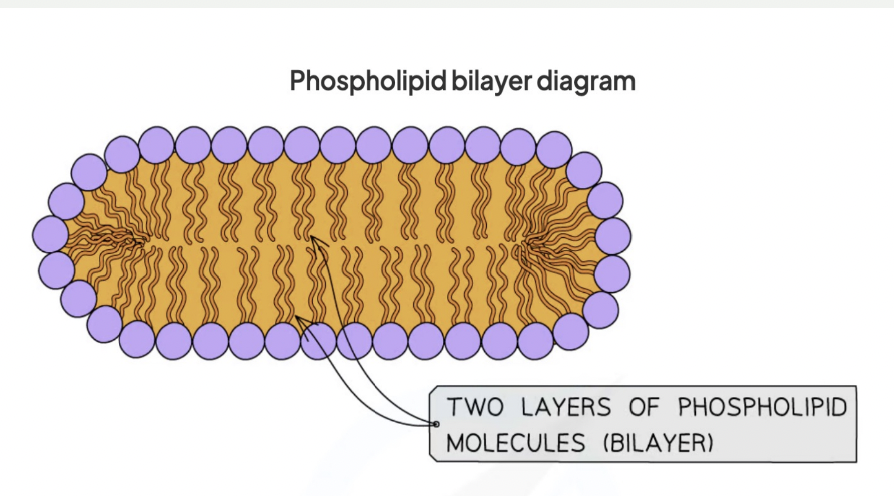B1.1.12 — Formation of phospholipid bilayers as a consequence of the hydrophobic and hydrophilic regions
1/6
There's no tags or description
Looks like no tags are added yet.
Name | Mastery | Learn | Test | Matching | Spaced |
|---|
No study sessions yet.
7 Terms
Cell membrane
Phospholipids form the basic structure of the cell membrane.
There several transport mediating proteins embedded in these phosphoplipids
How are phospholipids membrane formed
Membranes are formed when a hydrophilic phosphate head bonding with two hydrophobic hydrocarbon (fatty acid) tails
As phospholipids have a hydrophobic and a
hydrophilic region
Amphipathic
The phosphate head of a phospholipid is
polar, so is hydrophilic and therefore soluble in water
The fatty acid tail of a phospholipid is nonpolar so is hydrophobic and therefore insoluble in water
Molecules with both polar/hydrophilic and non polar/hydrophobic regions are
said to be amphipathic

Phospholipid bilayer and monolayer formation
When placed in water, the hydrophilic phosphate heads orient themselves towards the water and hydrophobic hydrocarbon tails orient themselves away from the water, causing them to form phospholipid monolayer
Such layers later combine to form phospholipid bilyaers- form basic structure of cell membrane
Amphipathic and barrier
Amphipathic nature natyre of phospholipids means that phospholipid bilayer acts as a barrier to most watrer-soluble substances
Non polar fatty acid tails
Prevents polar molecules or ions from passsing between them across the membrane .
means that water soluble molecules like sugars, amino cids and proteins cant leak out of the cells and unwanted water soluble molecules cant get in

phospholipid bilayer diagram
